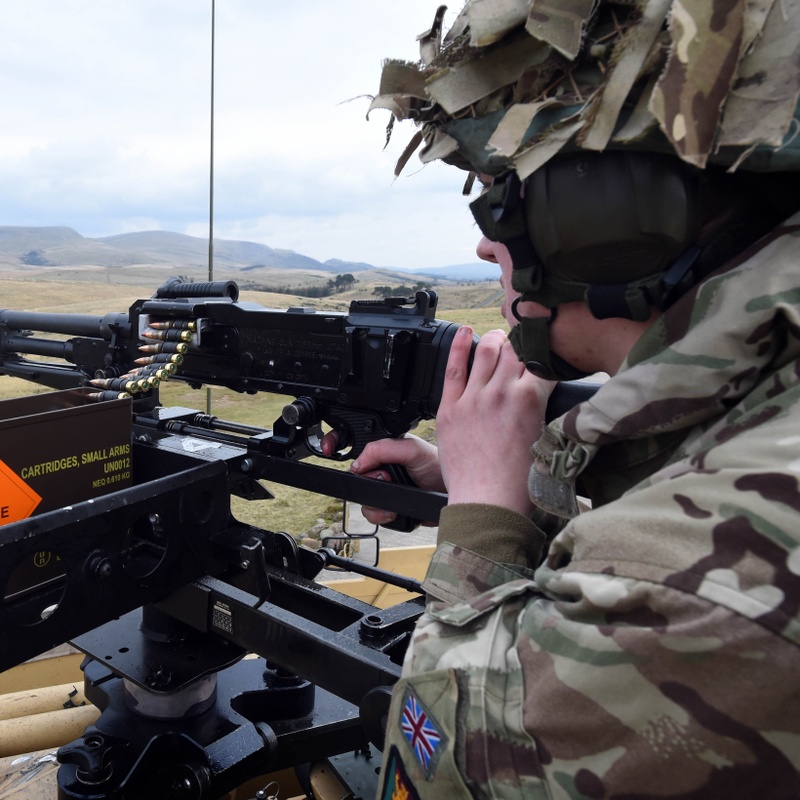
Army Air Corps
Army Air Corps Affiliated Since 2001
The modern Army Air Corps was formed in 1957 to incorporate the Air Observation Squadrons
Crewed by members of the Royal Artillery, and the Light Liaison and Reconnaissance units – operated by the Glider Pilot Regiment. By the early 1960s the Corps was operating fixed wing and helicopter fleets in units across the Army, including Combat, Combat Support and Combat Service Support, drawing aircrew and groundcrew from them. In the 1970s the Army Air Corps centralised and restructured to provide the now familiar roles of Army Aviation, such as:
- Offensive action
- Intelligence, Surveillance, Target Acquisition and Reconnaissance (ISTAR)
- Control and Direction of Firepower
- Command Support and Liaison
- Movement of Personnel and Material
The Corps currently operates the following aircraft across the range of these roles:
- Apache AH Mk 1 Attack Helicopter
- Lynx Mk 7 and Mk 9A Light Utility Helicopter
- Wildcat Light Utility Helicopter (being introduced into service in 2014/2015 to replace the Lynx)
- Bell 212 Utility Helicopter
- Islander and Defender Light Aircraft
- Gazelle AH1
- Squirrel HT 1 and HT 2 Training Helicopter
His Royal Highness, The Prince of Wales graciously took the role of colonel in chief Army Air Corps in 1992. It was he who presented the Corps with the Guidon on behalf of Her Majesty the Queen. The Guidon is a consecrated symbol of the Corps and recognises its status as a combat arm in the British Army.
Our current colonel commandant is General Sir Adrian Bradshaw, supported in his duties by his deputies, His Grace the Duke of Westminster and General Sir Gary Coward.
The headquarters of the Army Air Corps is in Middle Wallop in Hampshire, where the lead decisions are made on manning, special to arm training policy and cap badge or ‘regimental’ matters, under the regimental colonel.
Middle Wallop is also the home for the Army Aviation Centre, where 2 (Training) Regiment and 7 (Training) Regiment deliver ground and flying training to ab initio students, and conversion and continuation training to both regular and reserve Army Air Corps personnel.
The Museum of Army Flying is also here, with its significant archive and large collection of Army aviation artefacts dating back to the 19th century.
The Joint Helicopter Command combines the Front Line forces of the Army Air Corps, the Attack Helicopter Force (AHF) and the Aviation Reconnaissance Force (ARF), along with its RN and RAF counterparts and minor units and detachments employed and deployed on other duties.
The Attack Helicopter Forces operate Apache Attack Helicopters from a base at Wattisham Airfield in Suffolk with two Regiments; 3 Regiment AAC and 4 Regiment AAC.
The headquarters of the Aviation Reconnaissance Force is at Yeovilton. 5 Regiment AAC is based at Aldergrove in Northern Ireland, and 9 Regiment at Dishforth in North Yorkshire. Yeovilton is where the Wildcat Light Utility Helicopter is being introduced to replace the Lynx in that role. 1 Regiment AAC has entered the programme for conversion and will complete a move into Yeovilton in 2014. Squadrons of 9 Regiment AAC will be absorbed into 1 Regiment as they too go through the conversion process, which will result in the loss of the 9 Regiment number plate and the closure of Dishforth as an Army airfield by 2017.

The AAC Reserve will grow in 2014. 6 Regiment AAC provides reservists to augment regular AAC units in the Groundcrew trades and Air Manoeuvre Planning Teams (AMPT) for operations and training. The regiment’s headquarters are in Bury St Edmunds in Suffolk with 677 (Suffolk and Norfolk Yeomanry) Squadron AAC. There are additional detachments in the south and south west based upon 675 (The Rifles) Squadron AAC in Taunton, 678 (The Rifles) Squadron AAC at Milton Keynes, and 679 (Duke of Connaught’s) Squadron AAC in Portsmouth (the bracketed names of these reserve squadrons reflect their historical links.)
There are a number of other units carrying out support in the UK and across the world. 657 and 658 Squadrons AAC and 7 Flight AAC, 25 Flight AAC and 29 Flight AAC provide training support for British Forces in Brunei, Kenya and Canada respectively.
The Army Air Corps is supported by specialists from the Royal Electrical and Mechanical Engineers (REME), Royal Logistic Corps (RLC) and Royal Army Medical Corps (RAMC) under the collective title of Army Aviation.
Many AAC regiments have Army and Combined Cadet Force affiliations, from where some cadets have joined us as Aircrew and Ground crew. The Corps is also affiliated to the Honourable Company of Air Pilots and is very proud of its affiliation and close relationship with the Worshipful Company of Merchant Taylors.







